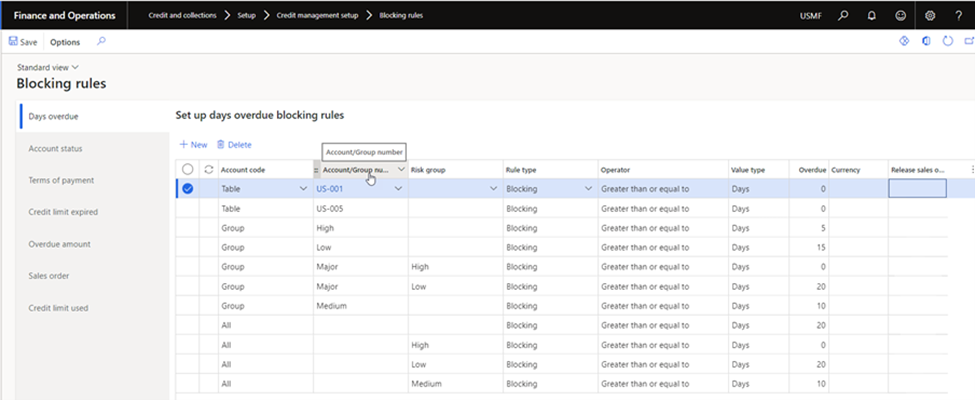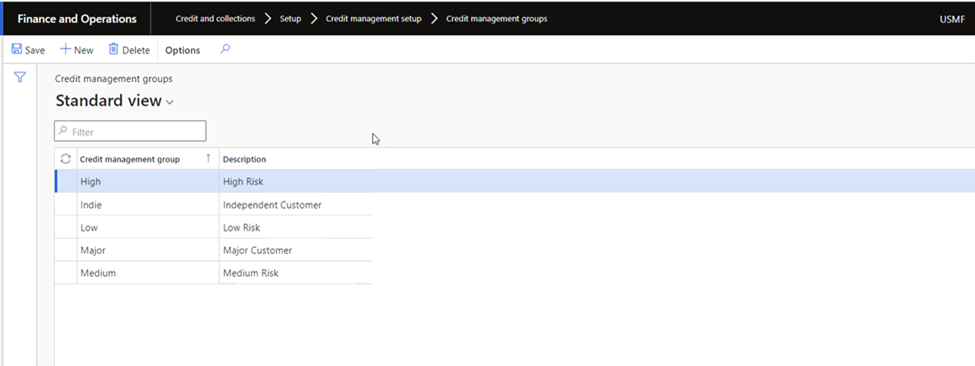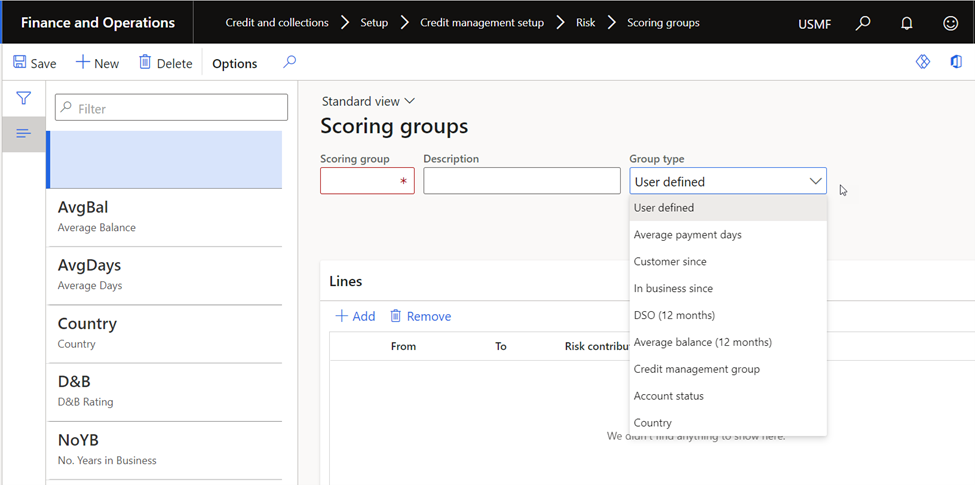Most companies still struggle with managing credit manually. Keeping track of customers, payment terms, ratings and more in a mix of Excel spreadsheets and siloed applications can lead to costly errors. Financial leaders need more flexibility and control when determining client-specific rules and limits.
Microsoft Dynamics 365 Finance automates many of these processes, increasing efficiency and reducing risk for companies.
This blog will cover the 5 features offered by Dynamics 365 Finance that reduce credit risk, including:
-
- Blocking Rules
- Credit Management Groups
- Scoring Groups
- Risk Classifications
- Automatic Credit Limits
Establish Blocking Rules
With the ability to establish blocking rules, users can automate the process of tracking client behavior and setting client-specific parameters to reduce issues such as spending over credit limits, past-due payments and more.

Users can manage seven categories of a client to effectively establish blocking rules:
-
- Days overdue: This rule establishes when the system will block a purchase from a client if their payments for past purchases exceed a specified amount of time.
- Account status: Users can establish that purchases for a client can be blocked based on their account status, or if the blocking rule should be excluded for a specific client.
- Terms of payment: Establish whether clients need to make partial or full payments before their purchase is allowed.
- Credit limit expired: Set the ability to place a sales order on hold if the client has surpassed a given number of days that their credit has expired.
- Overdue amount: Users can set client-specific restrictions on orders if their overdue amount is more than the given threshold.
- Sales order: This rule can limit the amount of a single order placed by a client. However, if a client places multiple orders that surpass the threshold, the system won’t put holds on those orders.
- Credit limit used: If a client has met or exceeded a specified percentage of their credit limit, the system will put a hold on any future purchases.
Credit Management Groups
While some customers need client-specific rules, some customers can be grouped together to operate under the same set of rules. Financial leaders can establish these groups with the credit management group function of Dynamics 365 Finance.

This can ease the challenge of managing each customer independently but still offers the flexibility to easily adjust as your clients grow and change.
Scoring Groups
Most organizations have tons of data available on the spending and payment habits of their clients. Leveraging the power of AI, Dynamics 365 Finance can use that data to assess your customers by establishing scoring groups. To do this, the software collects data that includes the:
-
- Average balance held
- Average days a balance is held
- Country
- D&B
- Number of years in business
- Number of years as a client

Dynamics 365 Finance gives users the ability to define each of those categories. For example, if you have a client that has been with your organization for 10 years, you can set the scoring category to recognize that as a low-risk client versus another client who has only been with you one year. That can be set as a high-risk amount of time. The longer a client stays with you, the lower their risk score.
Financial leaders no longer need to track this in Excel to determine if a client should be considered high-risk or not. Instead, once scoring groups are defined and a client is entered into the system, Dynamics 365 Finance will assign a risk score, place the client in a risk classification group and enable all blocking features for that classification.
Risk Classifications
Risk classifications are established based on the risk score a client receives. Risk scores come from the scoring groups mentioned above. Once you have your scoring groups defined, the system will determine a risk score for your client.
Financial leaders can set the limits for low-, medium- and high-risk scores. The lower the score the lower risk that specific client is. The power of AI gives financial leaders the peace of mind that high-risk clients and low-risk clients aren’t being given the same purchasing opportunities, reducing costly errors in the organization.
Automatic Credit Limits
When the parameters for risk classifications have been created by setting up your scoring groups, users can apply an automatic credit limit for specific risk classifications. For example, users can set the credit limit for high-risk customers to $10,000. If a client meets the criteria for high-risk, the system will automatically put a credit limit of $10,000 on their account and apply the necessary blocking rules when that client is purchasing.
This feature eliminates the need for financial leaders to manually track each client’s spending and enforce purchasing holds. Dynamics 365 Finance automates the process and eliminates the ability for clients to overspend on their credit limit.
To further reduce risk, organizations can use a trusted partner when implementing or migrating to Dynamics 365 Finance. As a trusted Microsoft partner, Columbus can ensure that your organization correctly sets up the parameters it needs to successfully leverage the power of AI to reduce risk and streamline the credit management process.